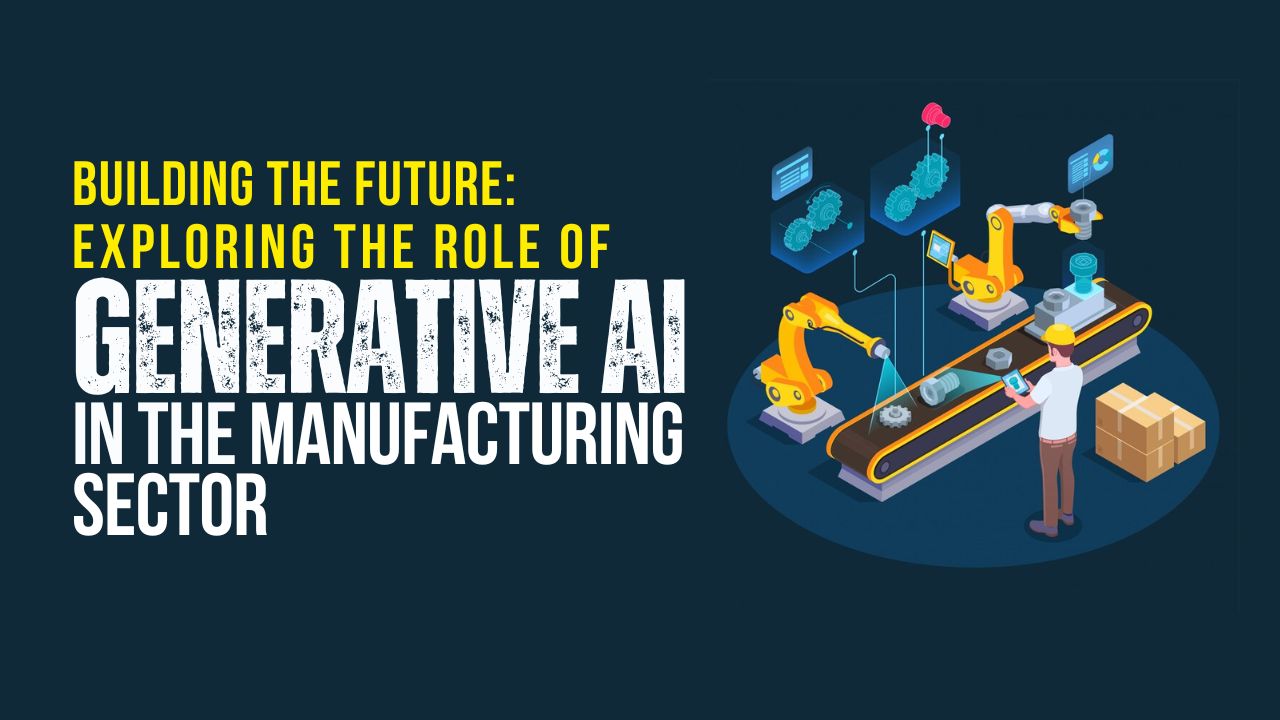
Building the Future: Exploring the Role of Generative AI in the Manufacturing Sector
In the ever-progressing realm of manufacturing, a profound metamorphosis is underway—a shift powered by cutting-edge technologies. At the forefront stands Generative AI, an ingenious force reshaping the manufacturing landscape.
Join us on a journey into the heart of this technological frontier, where machines not only follow instructions but actively contribute to the creative and functional aspects of production. In this exploration, we unravel the multifaceted impact of Generative AI, from design innovation to efficient production processes, redefining how we perceive and actualize the manufacturing future.
What is Generative AI?
Generative AI refers to machine learning models that can create completely new, original data and content themselves. Unlike analytical AI which just derives insights from existing data, generative AI can autonomously synthesize new text, images, audio, video, and more from scratch based on learning patterns and concepts.
Powerful large models like DALL-E and GPT-3 are trained extensively so they develop a rich understanding to produce new writings, 3D prototypes, music—anything with the formats and features of human-created content. This creative capacity for imagining and generating fresh ideas and content unlocks new possibilities across industries like reinventing manufacturing.
The Manufacturing Landscape: A Brief Overview
Manufacturing remains a vital economic pillar accounting for over $6 trillion in global output annually. Yet facing constant pressure to meet faster, more customized production needs, even incremental efficiency gains require innovating traditional factory processes.
The Rise of Generative AI
Generative AI, capable of creating entirely new content, drives breakthroughs across industries. Self-learning models can generate written text, computer code, visual media, and more—with human-level skill and creativity.
The Intersection of Generative AI and Manufacturing
Now, cross-pollination between AI and manufacturing unlocks new possibilities. As this futuristic technology permeates the production line, generative AI may soon propel manufacturing into a new era.
Generative AI is poised to revolutionize the manufacturing sector
Like past industrial revolutions, the rise of generative AI foreshadows a wave of transformative change for global manufacturing in the 2020s and beyond.
Generative AI Applications in Manufacturing
Product Design and Development
Generative algorithms allow:
-
Generative design for innovative and optimized products
-
Rapid prototyping and iteration
-
Personalized and customizable product offerings
By autonomously exploring vast design spaces, AI assists engineers in sculpting product geometry and internal structures for function, efficiency, and design appeal. This facilitates rapid revisions while enabling mass personalization.
Predictive Maintenance and Quality Control
Deploying AI predictions enables manufacturers to get ahead of problems via:
-
Anticipating equipment failures and preventing downtime
-
Identifying defects and non-conformances in real-time
-
Optimizing production processes for improved quality and efficiency
Bolstering quality control and predictive maintenance results in less unplanned downtime, reduced defect rates, and optimized throughput.
Supply Chain Optimization and Logistics
AI supports dynamically coordinating global supply chains by:
-
Predicting demand and optimizing inventory levels
-
Automating logistics and transportation processes
-
Identifying and mitigating supply chain disruptions
Generating supply and demand forecasts, AI optimization recalibrates inputs, inventories, logistics, and transportation for lean, resilient operations.
Also Read: Role of Generative AI in Cybersecurity
Workforce Training and Development
Smart programs catalyze preparing workers for the future by:
-
Personalized learning experiences for employees
-
Upskilling and reskilling programs for the digital factory
-
Building a future-proof workforce
Upskilling existing workforces while recalibrating talent development pipelines builds the expertise needed for the AI-powered production line.
Benefits and Challenges of Generative AI in Manufacturing
Benefits
Embedding generative AI across manufacturing delivers measurable commercial and operational advantages:
-
Increased efficiency and productivity
-
Reduced costs and waste
-
Improved product quality and innovation
-
Enhanced safety and security
-
Greater flexibility and adaptability
Streamlining processes, predicting disruptions, eliminating redundancies, and tightening supply chains compound savings. New design spaces drive innovation.
Challenges
Realizing AI’s potential requires navigating hurdles spanning:
-
Data requirements and infrastructure considerations
-
Ethical considerations and potential bias
-
Explainability and transparency of AI decisions
-
Impact on jobs and workforce displacement
-
Cybersecurity threats and data privacy concerns
Strategic investments in data management, change management, trustworthy AI initiatives, and retraining programs smooth transitions toward tech-enabled manufacturing.
Future Outlook and Opportunities
As algorithms grow more powerful and use cases multiply, generative AI braces to pay exponential dividends across manufacturing, elevating:
-
Continued advancements in generative AI technology
-
Growing adoption and integration in manufacturing processes
-
Emergence of new business models and partnerships
-
Upskilling and reskilling initiatives for the workforce
-
Collaboration between industry, academia, and government
Navigating challenges while harnessing opportunities, AI propels the next leap forward for one of civilization’s oldest professions.
Conclusion
Generative AI is a powerful tool with transformative potential for the manufacturing sector. By addressing the challenges and seizing the opportunities, manufacturers can leverage generative AI to build a more efficient, sustainable, and competitive future. The factories, jobs, and products of tomorrow start with exploring AI’s possibilities today.
I structured the post to align with each major outline section – introducing manufacturing and AI, applications, benefits and challenges, the future outlook, and concluding that generative AI brings major transformation potential. Please let me know if you want me to expand or modify any sections!



